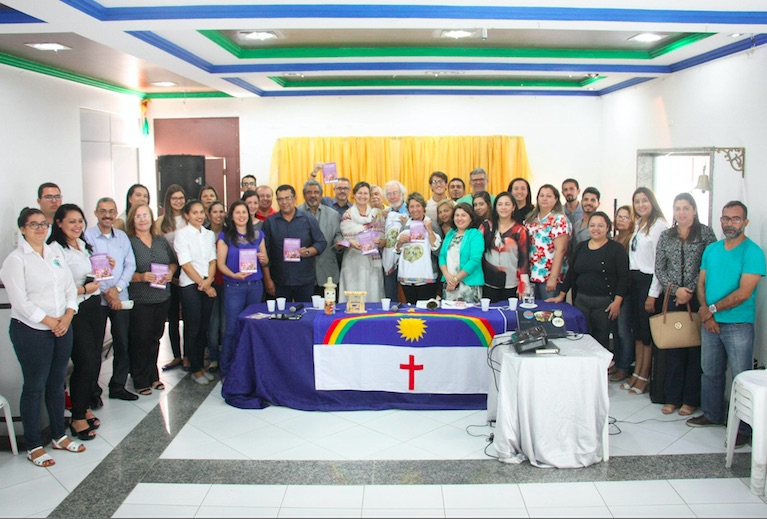. . DEMOCRATIC PARTICIPATION . .
by Helena Lourenço
At a meeting on August 25 in Agrestina (Pernambuco, Brazil), representatives from nine communities agreed to create a provisional commision that will lead to the formation of a Culture of Peace Council in the region of Agreste.

Photo by Jocelim Valdemar / Decom – PMA
The event was held by the Women’s Thematic Chamber of the Agreste and Mata Sul Municipalities Consortium
Among those present were the coordinator of the Women’s Chamber of Comaqsul and regional coordinator of the Central Agreste of the State Women’s Secretariat, Betânia Ribeiro, Agrestina’s Secretary of Public Policies for Women, Emilia Alves, the president of the Brazilian Association of Women Folklore Festivals of Brazil – ABRASOFFA, Helena Lourenço, the representative of the Public Policy Managers for Women in the Agreste Central Region, Claudia Roberta, the mayor of Lagoa dos Gatos, Edmilson Moraes, and the invited speaker, David Adams.
The theme of the speech by Dr. Adams was: The Culture of Peace and Non-Violence. He spoke out of his experience as the Director of the United Nations International Year for the Culture of Peace (2000). During the international year, 75 million people worldwide, 15 million of them in Brazil, signed the Manifesto 2000, as part of the initiative to promote a culture of peace. This shows a great awareness of the need to change our culture for a change of culture of peace, “he said.
(Article continued in right column)
(Click here for a Portuguese version of this article)
How can culture of peace be developed at the municipal level?
(Article continued from left column)
The proposal of the culture of peace seeks alternatives and solutions to these issues that afflict humanity as a whole, focuses not on the issue of violence, but on peace as a social state of dignity where everything can be preserved and respected. These points are one of the great challenges of building a culture of peace.
According to the United Nations, the culture of peace has eight aspects:
1. Education for a culture of peace. Tolerance and solidarity3. Democratic participation 4. Flow of information 5. Disarmament 6. Human rights 7. Sustainable development 8. Equality of gender
Dr. Adams said that “It is necessary to replace the culture of war with a culture of peace. This can be done by cities because they have no need for nuclear weapons, there is no need for war culture.
The speaker concluded that he has a dream to see Brazil recognized for spreading the culture of peace. “Brazil will be known worldwide for being a country that seeks a culture of peace, thanks to the young people who go to communities and favelas to work and learn about a culture of peace.
According to UNESCO, the culture of peace “is intrinsically related to the prevention and non-violent resolution of conflicts” and is based on the principles of tolerance, solidarity, respect for life, individual rights and pluralism. This discussion is strengthened by the growing vision of universal responsibility for the construction of a new world and places this theme as one of the main educational actions that promote effective sources of peace in the world.
COMAGSUL – It is the Consortium of Agreste and Mata Sul Municipalities and was born of the common needs between Agreste and Mata Sul municipalities, with populations below 70,000 inhabitants. The consortium’s mission is to promote regional integration, foster the socioeconomic and cultural development of Agreste and Mata Sul de Pernambuco, as well as strengthen Municipal Management through joint actions, seeking the exchange of experiences and cost reduction of public services management between two or more municipalities that are part of the consortium. Currently, the group of municipalities consortium is of 22 municipalities.